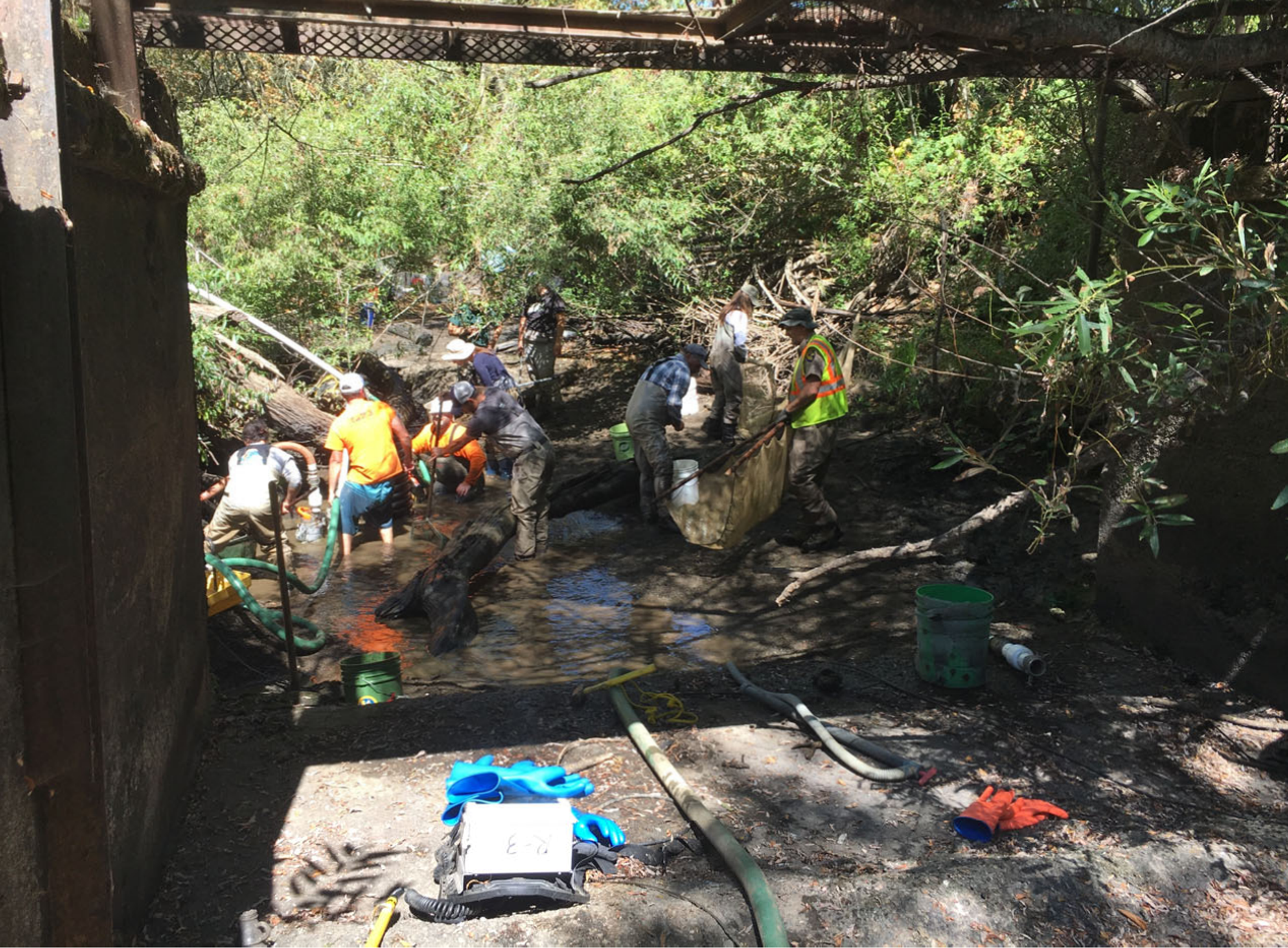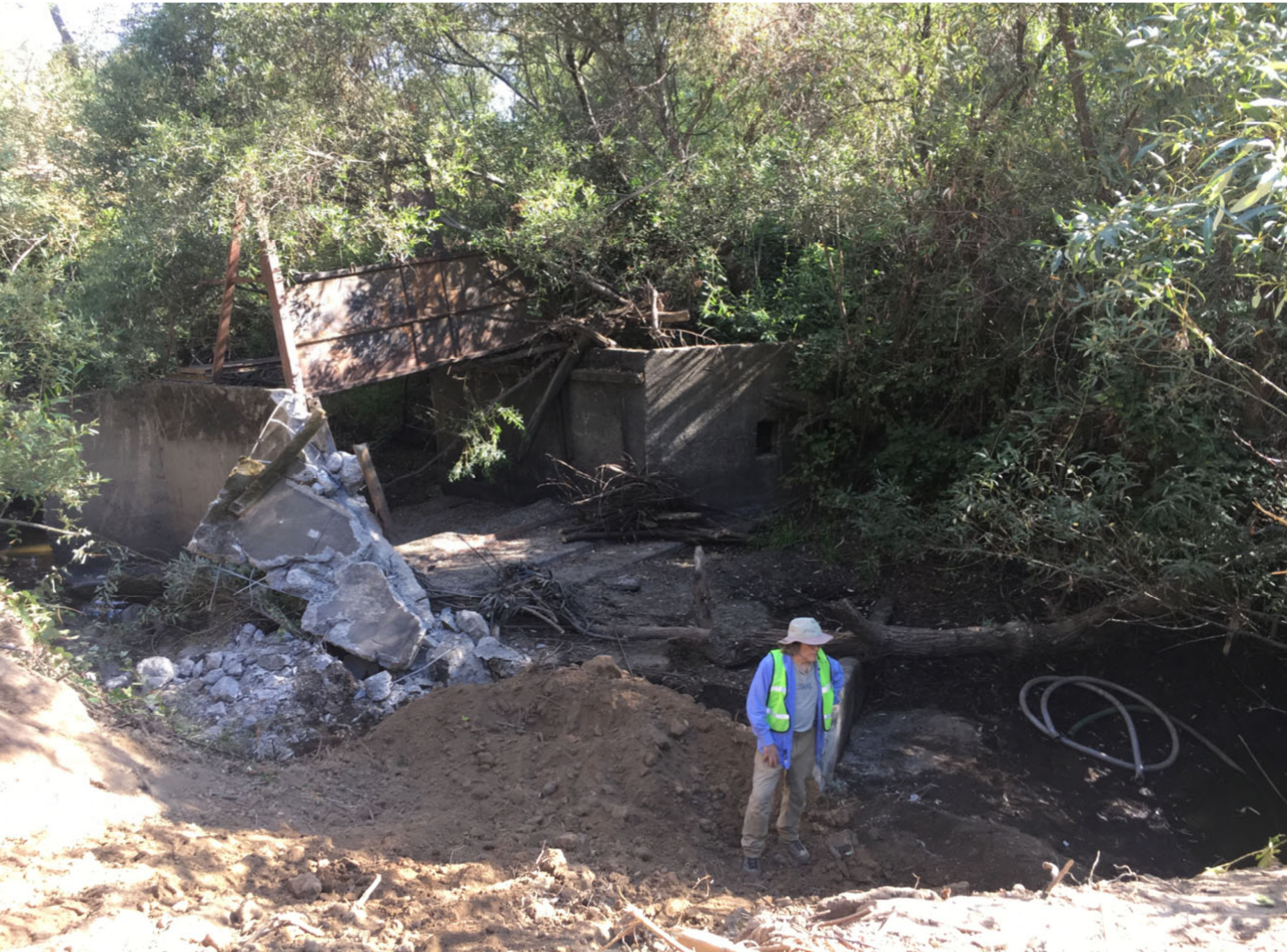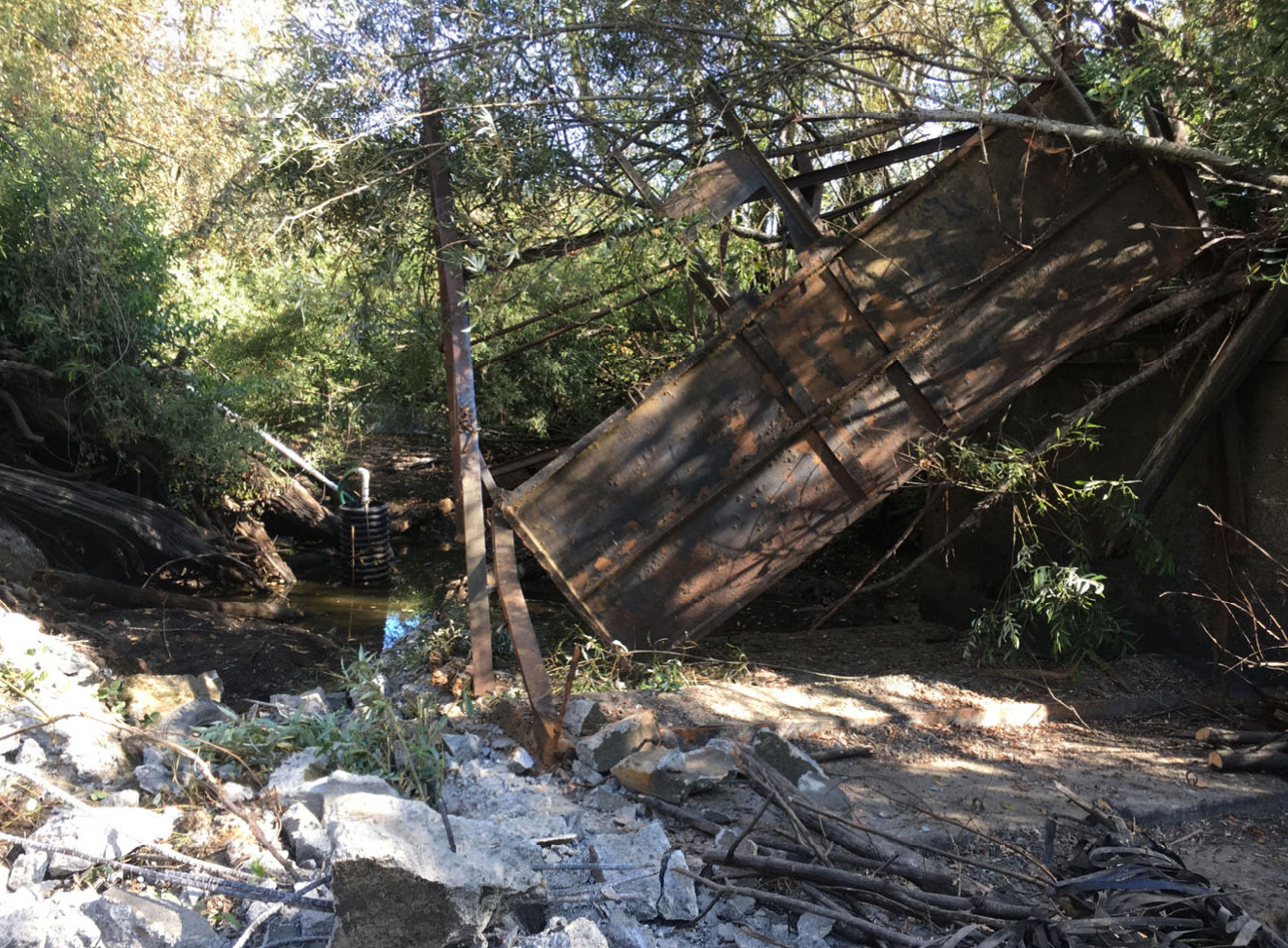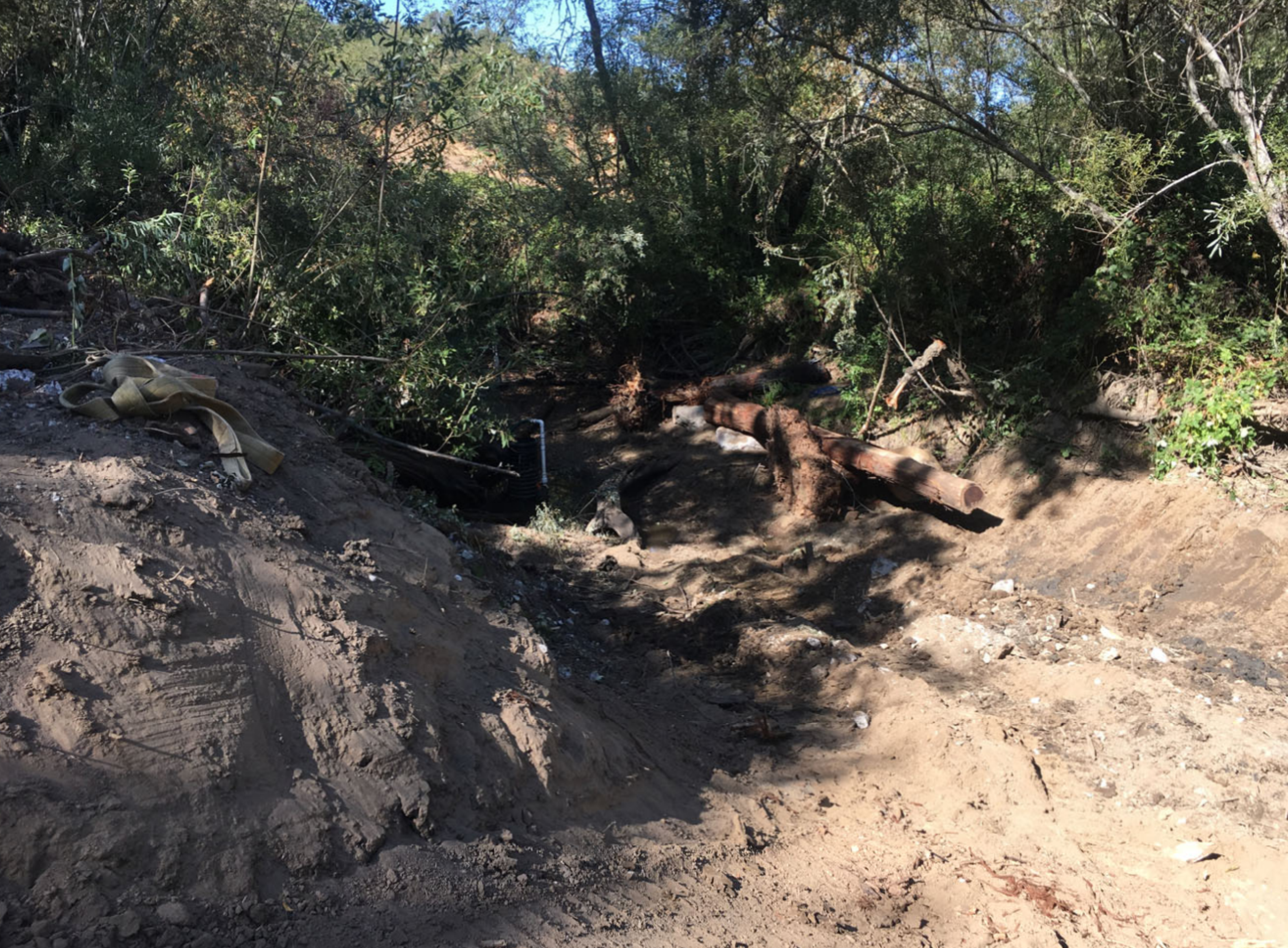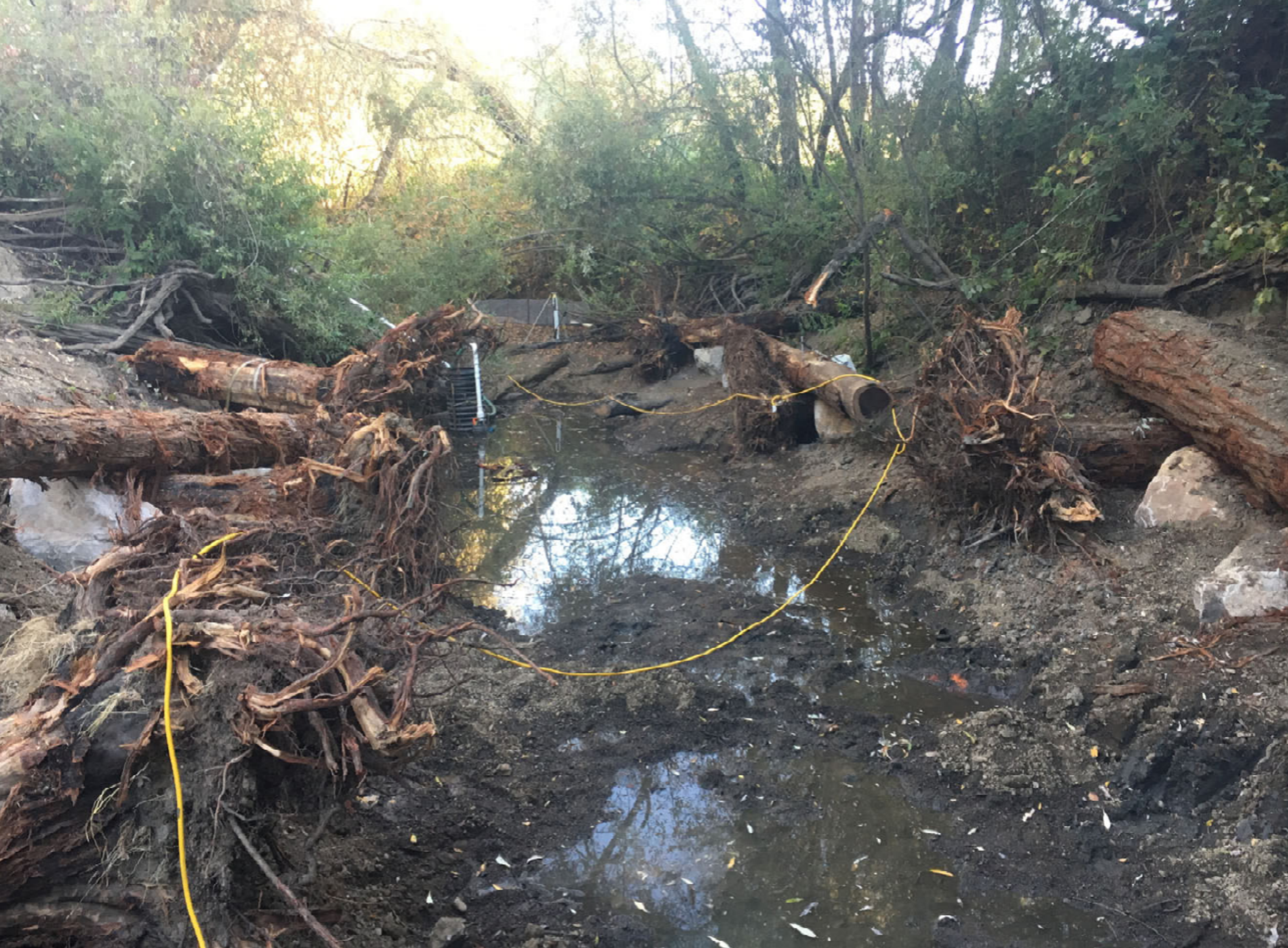Iron Horse Vineyards Dam Removal Project
Project Lead: Gold Ridge Resource Conservation District
Location of Project: 38.462605 -122.89656
Description of Project: Located in western Sonoma County, Green Valley Creek is considered a vitally important anadromous salmonid stream in the Lower Russian River basin. The watershed has been identified by the California Department of Fish and Wildlife (CDFW) and National Marine Fisheries Service (NMFS) as core priority recovery habitat for both threatened steelhead trout (Oncorhynchus mykiss) and endangered Coho salmon (Oncorhynchus kisutch). The NOAA Coastal Multispecies Plan’s Central California Coast Steelhead volume draft (October 2015) prioritizes the Green Valley Creek steelhead population as one of 28 essential independent populations targeted for attaining a low extinction risk, while the watershed is a focus of both CDFW’s coho recovery program and the Russian River Coho Salmon Captive Broodstock Program.
In 2013, the Gold Ridge RCD (GRRCD) and its partners, through funding from the State Coastal Conservancy and CDFW, finalized a management plan for the Green Valley Creek Watershed, focused on its potential to support salmonid populations through the restoration of watershed function. Fish passage for both adult and juveniles has been identified as a major hindrance to salmonid recovery. The access to quality spawning grounds for adults and the ability of juveniles to seek deep, cool water during summer low-flow conditions are key to the survival of the species. The removal of instream barriers in lower Green Valley Creek has been a priority to facilitate adult and juvenile salmonid passage through this critical migration corridor.
This project seeks to completely remove an obsolete flashboard dam at the Iron Horse Vineyards on lower Green Valley Creek, allowing for free passage of both adult and juvenile coho and steelhead through the site, while performing additional assessment work in lower Green Valley to identify and characterize both physical and biotic barriers to fish passage. The Iron Horse dam has been identified in several historical DFW (DFG) stream surveys, and most recently championed for removal by local DFW fisheries biologists.
While the dam removal has received funding from CDFW’s FRGP program, funding from the California Fish Passage Forum (Forum) will support several activities:
-
- Post-implementation monitoring of the site through 2020 beyond the CDFW grant term to ensure functionality of the erosion control measures and large wood structures;
- Landowner outreach and assessment work through lower Green Valley Creek to identify additional barriers, and corresponding updates to the PAD;
- Investigation of water quality conditions at and below Green Valley Creek’s confluence with Atascadero Creek (the upper end of the lower Green Valley reach) where a wetland complex significantly expanded through recent sedimentation has been identified as a significant biotic barrier to outmigrating salmonids.
The low-gradient lower Atascadero is a wetland complex, which fisheries biologists believe serves as critical habitat for salmonids, providing both plentiful food sources and low-velocity off-channel highflow refugia for salmonids migrating through Green Valley Creek. However, relatively recent sediment deposition in lower Atascadero Creek above its confluence with Green Valley has significantly altered conditions in these wetlands, converting them from seasonal riparian/wetland complex to a stagnant perennial instream pond, which suffers from fatally low dissolved oxygen levels and hydrogen sulfide concentrations from organic matter decay.
Forum funding will be focused on lower Green Valley’s primary role as a migration corridor, and will be used to investigate the winter-spring water quality conditions through this reach. The water quality monitoring will include deploying sondes to measure depth, temperature, dissolved oxygen, pH and conductivity at 15 minute intervals in the marsh section of this wetland complex to characterize the water quality and fish passage conditions during adult in-migration and smolt out-migration in the winter and spring. This data will be compared against the existing PIT-tag antennas and out-migrant fish trap in lower Green Valley Creek. GRRCD will deploy one sonde in Atascadero wetlands and another below the sediment accumulation area to characterize water quality conditions on both sides of the potential migration barrier. Additionally, GRRCD will conduct storm series sampling of chemical oxygen demand (COD), biological oxygen demand, and hydrogen sulfide. Finally, GRRCD will continue to collect and evaluate sonde and water quality data from several locations in lower Green Valley Creek to better characterize the wetland’s effects on downstream water quality.


